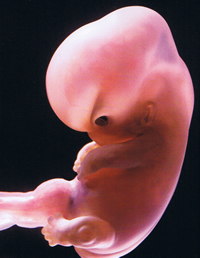Premature Labor – How To Tell If You Are At Risk
 In most cases pregnancy is a time of anticipation and happiness, but as most of you probably already know it can also be a time of complete uncertainty and confusion.
Most women will be primarily concerned with the development of their baby – is everything alright; is baby developing in time with what is expected; will I be a good parent – these are some of the more common questions and concerns.
During most of their pregnancy few women worry about going into labor early, even though we know that around 12% of all pregnancies will result in premature labor.
In most cases pregnancy is a time of anticipation and happiness, but as most of you probably already know it can also be a time of complete uncertainty and confusion.
Most women will be primarily concerned with the development of their baby – is everything alright; is baby developing in time with what is expected; will I be a good parent – these are some of the more common questions and concerns.
During most of their pregnancy few women worry about going into labor early, even though we know that around 12% of all pregnancies will result in premature labor.
What are preterm labor and preterm birth?
Premature labor occurs if you start having regular contractions which lead to your cervix to begin dilating or efface, thin out, before you reach 37 weeks of pregnancy. If you give birth before 37 weeks then it’s called a preterm birth and your baby is considered premature. Preterm birth may cause health problems or may even be fatal for the baby if it happens too early. The more mature your baby is the greater the chance that he or she will be healthy. Although most premature babies born between 34 and 37 weeks are generally healthy your healthcare provider may choose to delay your labor for a few days so your baby can be given corticosteroids to help the lungs develop faster, which of course will increase their chance of survival and being healthy at birth.Are you at risk of premature labor?
Although the specific causes of premature labor are not known there are certain factors which increase a womans risk of going into premature labor. Of course having a specific risk factor does not mean that you will go into premature labor. Women are at greatest risk for premature labor if:- They are pregnant with multiples
- They have had a previous premature birth
- They have certain uterine or cervical abnormalities
Medical risk factors include:
- Recurring bladder and/or kidney infections
- Urinary tract infections, vaginal infections and sexually transmitted infections
- Infection with fever (greater than 101 degrees F) during pregnancy
- Unexplained vaginal bleeding after 20 weeks of pregnancy
- Chronic illness such as high blood pressure, kidney disease or diabetes
- Multiple first trimester abortions or one or more second trimester abortions
- Underweight or overweight before pregnancy. Pregnancy Weight
- Clotting Disorder (thrombophilia)
- Being Pregnant with a single fetus after in vitro fertilization (IVF)
- Short time between pregnancies (less than 6-9 months between birth and beginning of the next pregnancy)
Lifestyle risks for premature labor include:
- Little or no prenatal care
- Smoking
- Drinking alcohol
- Using illegal drugs
- Domestic violence, including physical, sexual or emotional abuse
- Lack of social support
- High levels of stress
- Low income
- Long working hours with long periods of standing
Premature labor



